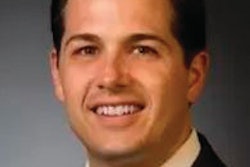
Financial expert Frank Ross has worked with hundreds of landscape company owners over his 40 plus-year career in the Green Industry. One of those contractors was Mike Rorie. Rorie now shares what he characterizes as "the best thing he ever learned from Frank" – the three keys to transforming his financial future. Rorie's insights are then supplemented with commentary from Frank Ross (FR).
Make a commitment
When you're talking about getting a better handle on the financial side of your company, you—as the owner—must embrace the concept.
Secondly, you may have some veteran, higher-level employees who get nervous when you start talking about this new commitment. Ultimately, they may clog things up and get in the way of progress. You have to be willing to change some people out or move them around. You need people around you who want to go and grow.
FR: I have found that most employees are "willing warriors" who, after goals are explained to them, will follow you (the owner) anywhere. Any valued employee will embrace your vision because they know that doing so will not only ensure the success of the company, but will also ensure their personal success, both professionally and financially.
Keep it simple, focused
Think about the kinds of information and data you want to track. Don't make it too complicated. If knowing how much a quarter-gallon of gas or yard of mulch costs doesn't really help you make decisions, don't track it down to that finite a level. Less is more every time. Think about the information you need—then start asking for it.
FR: When ownership expresses its goals, try to stay at the 35,000-foot level; leave the details to your management team. Examples of that 35,000-foot view might include:
- How much profit should we target?
- Are we planning any significant capital expenditures in the way of trucks, equipment, facilities, etc.? What level of revenue growth is required to cover those needs?
- What changes are we anticipating organizationally? Are we anticipating new hires/fires?
- What changes in personnel policies are we anticipating (wages, benefits, etc.)? Do we have the adequate cash resources to cover these goals?
- How do this year’s goals fit our three- to five-year vision?
These are just a few examples. The point is that your employees will not make these types of decisions; only you can. It’s your money and risk. You lay the groundwork as to how much you are willing to risk. Then, a good management team will handle the detail.
Use your budget to establish accountability
A budget is an essential tool because it allows you to plan—and to measure where you are according to that plan. Also, budgeting is a way to get all of your key employees to collaboratively engage. You can then dish it down to levels of accountability.
Frank taught us to assign watchdogs to different areas of the budget. For example, why should the owner be obsessing over lawnmower parts? That could be assigned to the operations manager or lead mechanic.
When a landscape company misses its profit goal, it's almost always because it missed its revenue goal. That's usually because the key people didn't stay focused on hitting the revenue goal. You need to have a budget that establishes the goal—and then you have to keep your eye on capturing that revenue.
FR: Perhaps the absolute best management planning tool on the planet is one I call the rolling budget. Mike Rorie's management team used this document as their financial bible. Because of that commitment, I am certain Mike was able to steer clear of many of the pitfalls which mere mortals often fall victim to.
The report looks something like this:
- Take your annual budget and spread it by month according to when you feel you will be generating revenues and spending money. The first two columns on the left (dollars and % to sales) show this original budget; these never change.
- The two columns right of that show the sum of the 12 months, or your rolling budget for the year (also dollars and % to sales).
- Looking further to the right, we have each of the 12 months of the year (only dollars). As you move through the year, you replace the monthly goals with your actual numbers, month by month. These will re-total to the left (step 2) and will allow you to compare to the original budget.
Now, here’s the beauty in this: Every month when Mike’s management team would review the monthly and year-to-date performance, they would also re-budget the remainder of the year. That’s right: Mike’s team was always re-budgeting to make sure they had the clearest picture as to how they would complete the year. It got to be a competition amongst the managers as to who was the most accurate in nailing their group’s performance.
The idea is to draw the picture as to how the year will end. If changes need to be made, make them quickly and with as much lead time as possible. Imagine if you could get your management team’s collective heads around goal-setting at this level. Talk about owning the numbers! Talk about accountability! Talk about the power! Now that is beyond sweet!
By utilizing a unique training methodology known as A Better Way 2 Learn, financial expert Frank Ross can be present at all of your company’s financial meetings—for a fraction of the investment. Click here to learn more and to sign up for a no-risk trial offer.



![Gravely Pro Turn Mach One My23 Dsc03139 Edit 1200x800 5b2df79[1]](https://img.greenindustrypros.com/mindful/acbm/workspaces/default/uploads/2025/10/gravely-pro-turn-mach-one-my23-dsc03139-edit-1200x800-5b2df791.BucBnDoN22.jpg?auto=format%2Ccompress&fit=crop&h=100&q=70&w=100)








![Gravely Pro Turn Mach One My23 Dsc03139 Edit 1200x800 5b2df79[1]](https://img.greenindustrypros.com/mindful/acbm/workspaces/default/uploads/2025/10/gravely-pro-turn-mach-one-my23-dsc03139-edit-1200x800-5b2df791.BucBnDoN22.jpg?ar=16%3A9&auto=format%2Ccompress&fit=crop&h=135&q=70&w=240)







